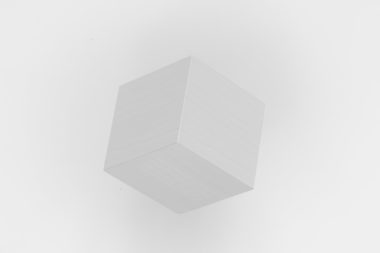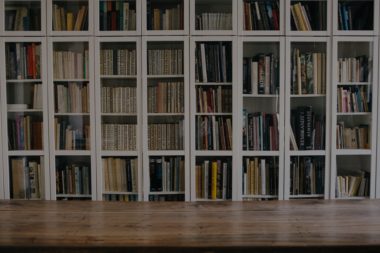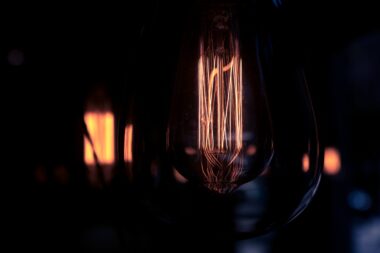Author: Markus F. Peschl
This is an excerpt from a draft of an article that will appear in 2022 in an anthology on human(e) learning spaces by Christine Kohlert, published by Springer.
Innovation deals with the future by intervening in our environment and shaping it. But if we don’t just want to optimize existing solutions or innovate incrementally, we have to engage in future-oriented ways of thinking, learning and acting.
In this context, the notion of Futures Literacy plays an important role. While the classic understanding of literacy focuses on proficiency in reading, writing, or mathematical thinking, more recent forms of literacy include:
- Critical thinking
- Dealing with technology
- Social and empathic abilities
Futures Literacy goes one step further by claiming that it is an essential cognitive capacity to cultivate and educate our anticipatory capabilities. In many cases, however, these capabilities are mistakenly reduced to planning or setting, and achieving goals.
They do not go beyond a strategy of extrapolating from the past which is based on linear thinking, prediction by probabilities, continuity, and “no change in the conditions of change”.
This rather narrow perception of anticipating and shaping the future has its roots in an understanding of the future as a goal or desired state that we already have in mind and that has to be achieved.
From Knowing the Future to Enabling Unfolding Futures
This is in contrast to what is referred to as anticipation for emergence. The later-than-now is no longer an explicit and planned goal, but a potential that is intrinsic to already existing artifacts (i.e. products, or services). It undergoes a process of unfolding and emergence and will actualize at a later point in time.
Hence, futures literacy is not an ability to “know the future”, but it is about exploring, preparing, and enabling possible futures. It creates conditions for beneficial futures to emerge.
The future, or more precisely, future potentials emerging in the present, thus become one of the most important sources in this process of shaping the future. In this sense futures literacy “makes use” of the future, instead of the past, and it becomes a source of new opportunities and possibilities for the present.
Futures literacy is not an ability to “know the future”, but it is about exploring, preparing, and enabling possible futures.
What does this mean, and more importantly, which cognitive and embodied activities are involved? And how to provide an appropriate education for it? As for our futures literacy cognitive capacities, we refer to them as anticipatory sense-making and we have written about it in one of our previous blog posts.
As for educational issues, we have to acknowledge that in such a future-oriented perspective it is neither sufficient that one provides or makes use of already existing knowledge only, nor that we teach how to predict or plan for the future.
Rather, the challenge is to learn how to deal with the open-endedness, emergent, and disruptive nature of the future. This can be achieved by exploring, co-creating, and shaping new spaces and niches for action, as well as by identifying and cultivating enablers for realizing latent potentials in the present. In other words, futures literacy is about engaging in a process of co-becoming with an unfolding reality.
Innovation and Learning as Co-becoming
Co-becoming means that we have to reflect on and question our relationship with the world. Instead of primarily knowing “about” the world, learning “about it”, and controlling it, we need to engage in a relational, interaction-driven, existential, and cooperative relationship with the world.
This novel form of engagement was also identified as a key imperative in a recent UNESCO report on the future of learning and education:
„…we have recognized that we live and learn in a world. Our pedagogies no longer position the world ‘out-there’ as the object we are learning about. Learning to become with the world is a situated practice and a more-than-human pedagogical collaboration… By focusing on worldly relations and encounters as inherently pedagogical, acknowledging that it is not only humans that teach and learn, and by mobilising human curiosity to learn from what is already going on in the world, we… make the shift from only ever learning about the world to learning with it.“
UNESCO – Learning to become with the world: Education for future survival.
Hence, the challenge of learning and innovation is to engage in a process of co-becoming with the world rather than just learning about the world. This has a social dimension as well, as it implies not only a co-becoming with the “non-living world”, but also with other cognitive systems and humans. Participatory sense-making is the foundation for such a process which ultimately leads to co-creating the world as a socially enacted environment.
In many cases, these interactions of co-becoming open up new domains of social sense-making that would not be available for each individual on their own. Engaging in such joint processes of sense-making creates meaning that is not only jointly constructed, but that constitutes novel meaning being the foundation for innovation in many cases. If these processes are based on future potentials, we do not only co-become with the existing world, but with its future.
What is proposed, is an alternative perspective on how novel meaning, novel knowledge, and innovations can be brought about in an anticipatory emergent process of socio-epistemic cooperation and co-becoming with the unfolding social and non-social environment which we refer to as Emergent Innovation.
As an analogy, imagine two or more musicians improvising together and bringing forth novel melodies, rhythms, and harmonies by following and exploring the potentials from the music their respective partners provide in their interactions. Similarly, as in future-driven innovation processes, they are mutually making “use of the future” in the sense of sensing and developing the potentials provided by their environment.
Subscribe to Our Newsletter
Keep your innovative edge with more stories like this and additional reading tips, muses, and project updates.
References:
De Jaegher, H., & Di Paolo, E. (2007). Participatory sense-making. An enactive approach to social cognition. Phenomenology and the Cognitive Sciences, 6(4), 485–507.
Ingold, T. (2013). Making. Anthropology, archaeology, art and architecture. Routledge.
Miller, R. (Ed.). (2018). Transforming the future. Anticipation in the 21st century. Routledge.
OECD. (2018). The Future of Education and Skills: Education 2030. OECD. https://www.oecd.org/education/2030/E2030%20Position%20Paper%20(05.04.2018).pdf (date of download: 27.02.2020)
Peschl, M. F. (2020). Theory U: From potentials and co-becoming to bringing forth emergent innovation and shaping a thriving future. On what it means to “learn from the future as it emerges.” In O. Gunnlaugson & W. Brendel (Eds.), Advances in Presencing (Vol. 2, pp. 65–112). Trifoss Business Press.
Peschl, M. F., Fundneider, T., & Kulick, A. (2015). On the limitations of classical approaches to innovation. From predicting the future to enabling “thinking from the future as it emerges.” In Austrian Council for Research and Technology Development (Ed.), Designing the Future: Economic, Societal and Political Dimensions of Innovation (pp. 454–475). Echomedia.
Peschl, M. F., Rötzer, K., Bottaro, G., & Hartner-Tiefenthaler, M. (2019). The role of the shift from I-to-We and Theory-U in overcoming 21st century illiteracies. In O. Gunnlaugson & W. Brendel (Eds.), Advances in Presencing (Vol 1) (pp. 161–210). Trifoss Business Press.
Poli, R. (2021). The challenges of futures literacy. Futures, 132, 1–9.
UNESCO. (2021). Learning to become with the world: Education for future survival. UNESCO (Futures of Education). https://unesdoc.unesco.org/ark:/48223/pf0000374032?fbclid=IwAR0YU-sJserzEoHPvkRHkYAYO1Eq_nyFjHmcH8Em0n4KJx0BZib4hP5bk8A (date of download: 07.12.2021)


